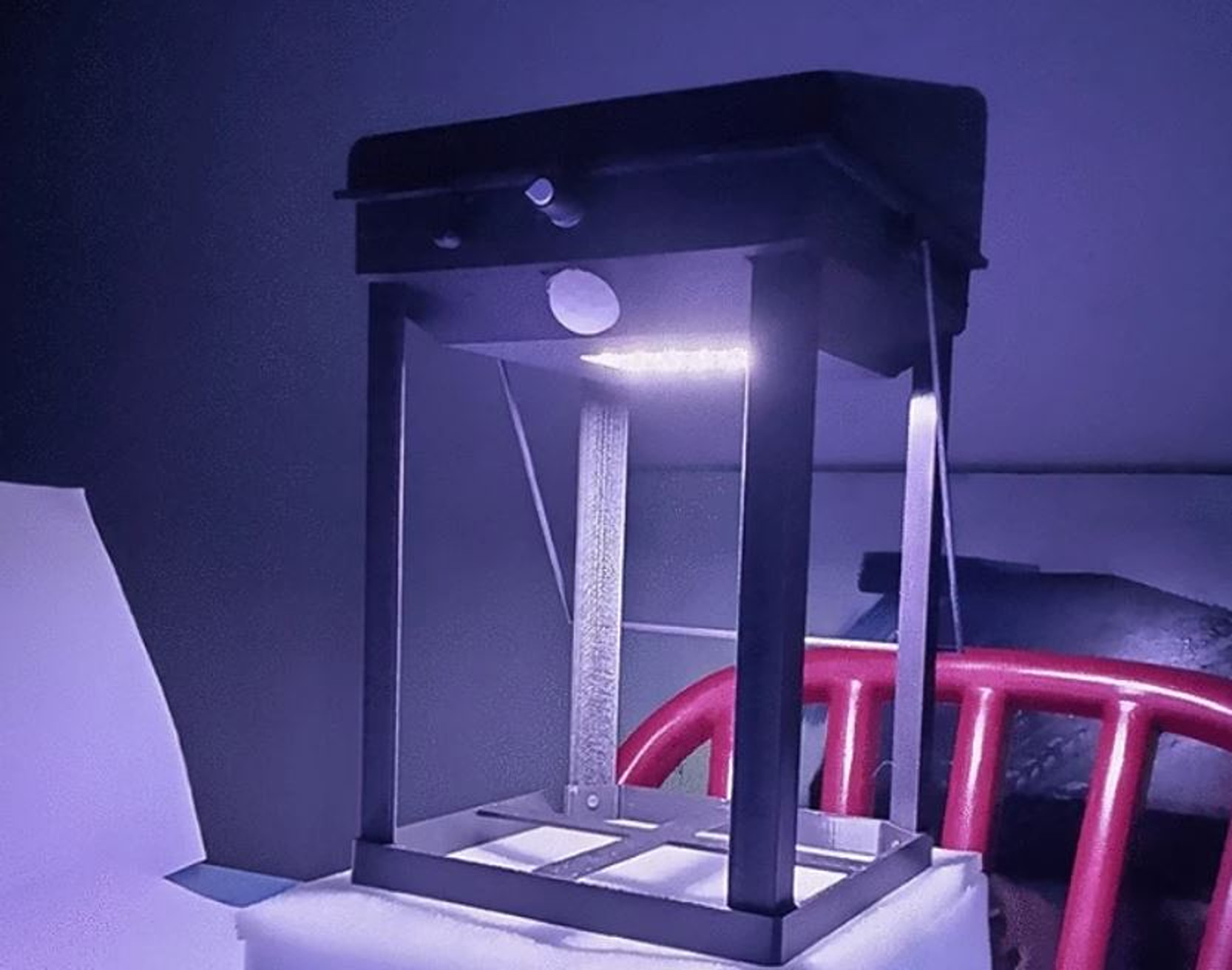
AEM10941-based solar lamp illuminating a dark room
Image: University of Buea, scientific reports, Common License CC BY 4.0
Scientists from Cameroon have designed a novel solar-powered lighting system for rural areas.
The proposed system is based on the commercially available solar energy harvesting integrated circuit (IC) solution AEM10941 developed by Belgium-based E-peas. The AEM10941 system is an integrated energy management circuit that extracts DC power from up to 7-cell solar panels to simultaneously store energy in a battery and supply the system with two independent regulated voltages.
The academics added the ATMEGA328PU microcontroller, which allows the lighting system to switch between indoor and outdoor lighting moods, as well as a passive infrared (PIR) sensor, a potentiometer, and a LED lighting module.
The solar panel powering each system has a capacity of 2 W and charges a 3.7 V Li-ion battery during the day, while the mini board was configured with a maximum power point tracking (MPPT) ratio of 85%. Twenty pieces of LED were also installed, each with a capacity of 0.2 W, for a total of 4 W. The system measures 28 cm x 6 cm x 16 cm and weighs 100 g. The solar panel is installed with a tilt angle of 10 degrees, and the PIR sensor is installed at 36 degrees.
The group conducted a series of measurements to measure both the charging and discharging rates and illuminance levels.
“We employed a multimeter connected to the battery to monitor the charging process, with readings recorded at regular intervals using a timer,” they further explained. “In contrast, for the discharge assessment, we activated the lamp at maximum brightness within a darkened room to simulate real-world usage conditions.”
The measurements showed that the system exhibited a luminous intensity of 50 lx at the lowest brightness setting, 700 lx at medium brightness, and 1,436 lx at maximum brightness, which proved better or similar to the intensity of kerosene lamps.
In addition, solar charge time was found to be three hours, sufficient for a full brightness run time of 10 hours. Based on the kerosene lamps' user response, the need for light per night in remote communities in Cameroon is four hours.
Performance evaluation tests revealed that the AEM10941 effectively charges the battery to full capacity within three hours. Additionally, in indoor mode, a single charge can sustain up to 10 hours of lighting, demonstrating the lamp’s efficiency and reliability in providing prolonged illumination.
“Moreover, reliable lighting enhances safety by illuminating pathways and deterring potential threats, contributing to a sense of security within the community. Additionally, by reducing reliance on hazardous kerosene lamps, solar lamps promote better health outcomes by minimizing exposure to harmful fumes and reducing the risk of accidents,” the academics added.
The system was presented in “Design and implementation of AEM10941 based solar energy system harvester for domestic lighting as a sustainable lighting solution for rural areas,” published in Scientific Reports. The research was conducted by scientists from Cameroon’s University of Buea and the African Scientific Association for Innovative and Entrepreneurship (ASAIE).
TrendForce 2024 Global LED Lighting Market Analysis
Release Date: 01 February 2024 / 31 July 2024
Language: Traditional Chinese / English
Format: PDF and Excel
Page: 90-100 / Semi-Annual
|
If you would like to know more details , please contact:
|












